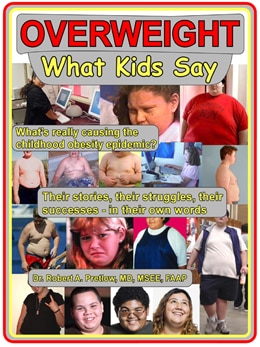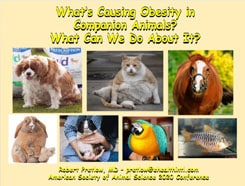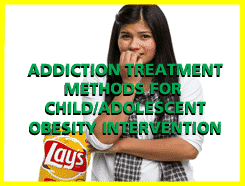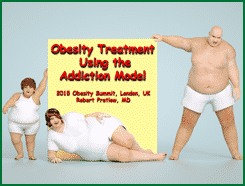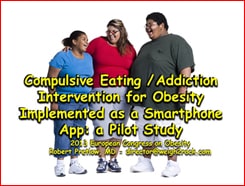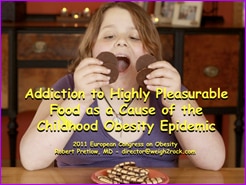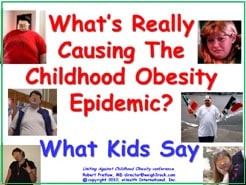UNICEF Warns Childhood Obesity Has Surpassed Underweight Worldwide

Obesity has now overtaken underweight as the more common form of malnutrition among children, according to a new UNICEF report. The study, “Feeding Profit: How Food Environments are Failing Children,” reveals that 1 in 10 school-aged children and adolescents — about 188 million — are living with obesity, putting them at risk of serious, life-threatening diseases.
Obesity in children isn’t just about size; it raises risks for Type 2 diabetes, high blood pressure, cardiovascular disease, and even certain cancers later in life. Starting so young makes the costs even higher. By 2035, being overweight and obesity are expected to drain more than $4 trillion a year globally — about 3 percent of the world’s GDP.
The report draws on data from more than 190 countries. Since 2000, underweight prevalence among children ages 5-19 has dropped from nearly 13% to 9.2%. At the same time, obesity has more than tripled, from 3% to 9.4%, and now exceeds underweight in every region except sub-Saharan Africa and South Asia.
Alarming trends across regions
The findings highlight especially high rates of childhood obesity in several Pacific Island nations. In Niue, 38% of 5-19-year-olds live with obesity; in the Cook Islands, 37%; and in Nauru, 33%. These figures have more than doubled since 2000, largely due to a shift away from traditional diets toward cheap, energy-dense imported foods.
Wealthier nations are not immune. For instance, 27% of children and adolescents in Chile are obese, along with 21% in the United States and 21% in the United Arab Emirates.
UNICEF Executive Director Catherine Russell commented:
When we talk about malnutrition, we are no longer just talking about underweight children… Obesity is a growing concern that can impact the health and development of children. Ultra-processed food is increasingly replacing fruits, vegetables and protein at a time when nutrition plays a critical role in children’s growth, cognitive development and mental health.
The health and economic costs
While undernutrition such as wasting and stunting remains a problem for children under five in many low- and middle-income countries, the prevalence of obesity among older children is rising quickly. Globally, 391 million children and adolescents, which is 1 in 5, are now overweight, with a significant proportion classified as obese.
The report stresses that this crisis is not about individual choices but about environments saturated with unhealthy foods. Ultra-processed products (high in sugar, salt, refined starches, and unhealthy fats) are dominating children’s diets. Schools and shops are filled with them, while digital marketing gives food companies unparalleled access to young audiences.
A UNICEF U-Report poll of 64,000 young people aged 13-24 across 170 countries showed just how pervasive this influence is. Seventy-five percent of respondents recalled seeing ads for sugary drinks, snacks, or fast foods in the previous week, and 60% said the ads made them want the products more. Even in conflict zones, 68% of young people reported exposure to such marketing.
The long-term costs are staggering. In Peru alone, obesity-related health impacts could cost more than US$210 billion. By 2035, the global economic toll of overweight and obesity is projected to exceed US$4 trillion annually.
Policies that make a difference
Despite the bleak outlook, there are success stories. Mexico, where ultra-processed foods and sugary drinks make up 40% of children’s daily calories, has banned the sale and distribution of these items in public schools. This policy shift has improved food environments for more than 34 million children.
UNICEF is urging governments, civil society, and global partners to act quickly by:
- Enforcing strong policies such as food labeling, marketing restrictions, and taxes or subsidies to shift demand toward healthier foods.
- Supporting social and behavior change programs that empower families to demand better food options.
- Banning junk food sales and sponsorship in schools.
- Safeguarding policy-making processes from food industry interference.
- Strengthening social protection measures so vulnerable families can afford nutritious diets.
Russell emphasized:
In many countries we are seeing the double burden of malnutrition — the existence of stunting and obesity. This requires targeted interventions… Nutritious and affordable food must be available to every child to support their growth and development. We urgently need policies that support parents and caretakers to access nutritious and healthy foods for their children.
Your responses and feedback are welcome!
Source: “Obesity exceeds underweight for the first time among school-age children and adolescents globally — UNICEF,” UNICEF, 9/9/25
Source: “Child obesity level surpasses underweight cases worldwide for the first time, UNICEF warns,” UN.org, 9/9/25
Source: “For the first time, more kids are obese than underweight,” Yahoo.com, 9/15/25
Image by Porapak Apichodilok/Pexels










 FAQs and Media Requests:
FAQs and Media Requests: 
